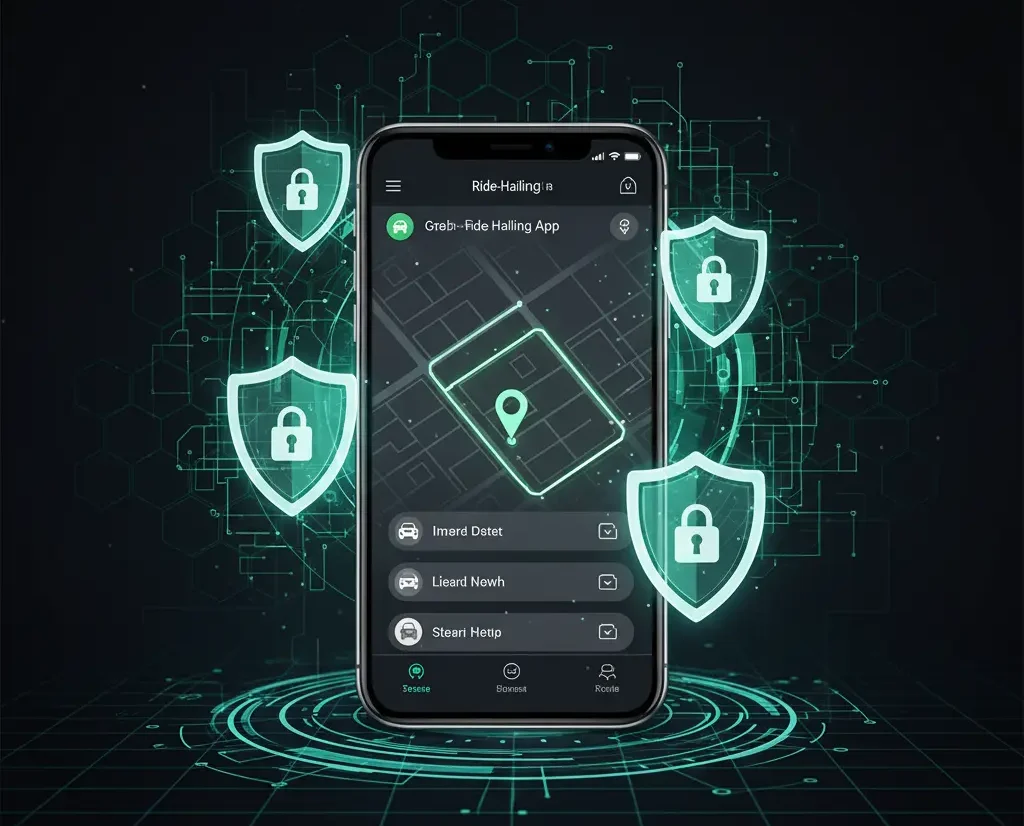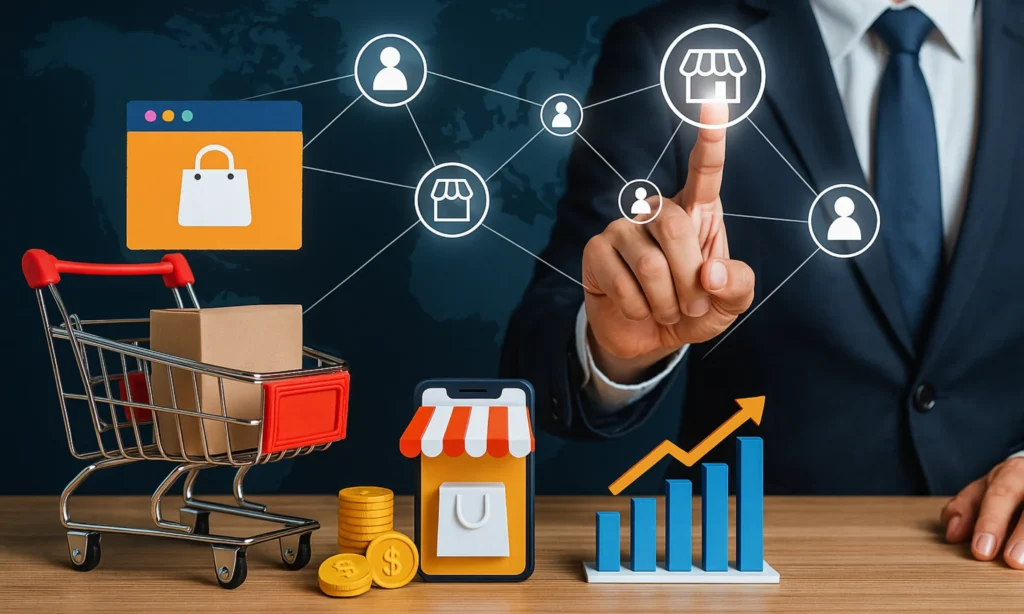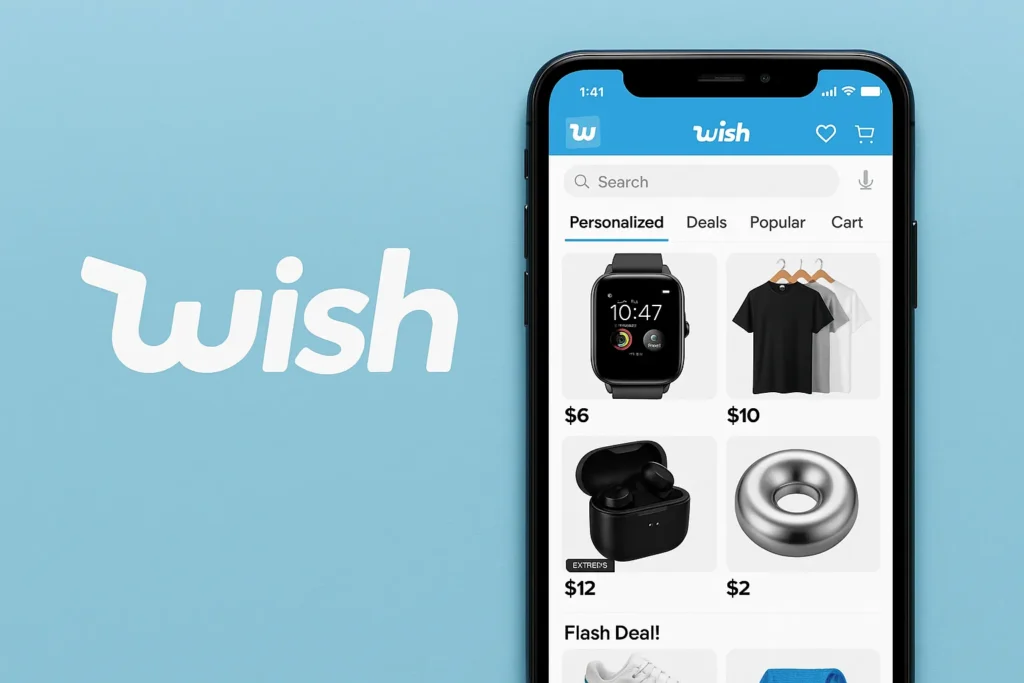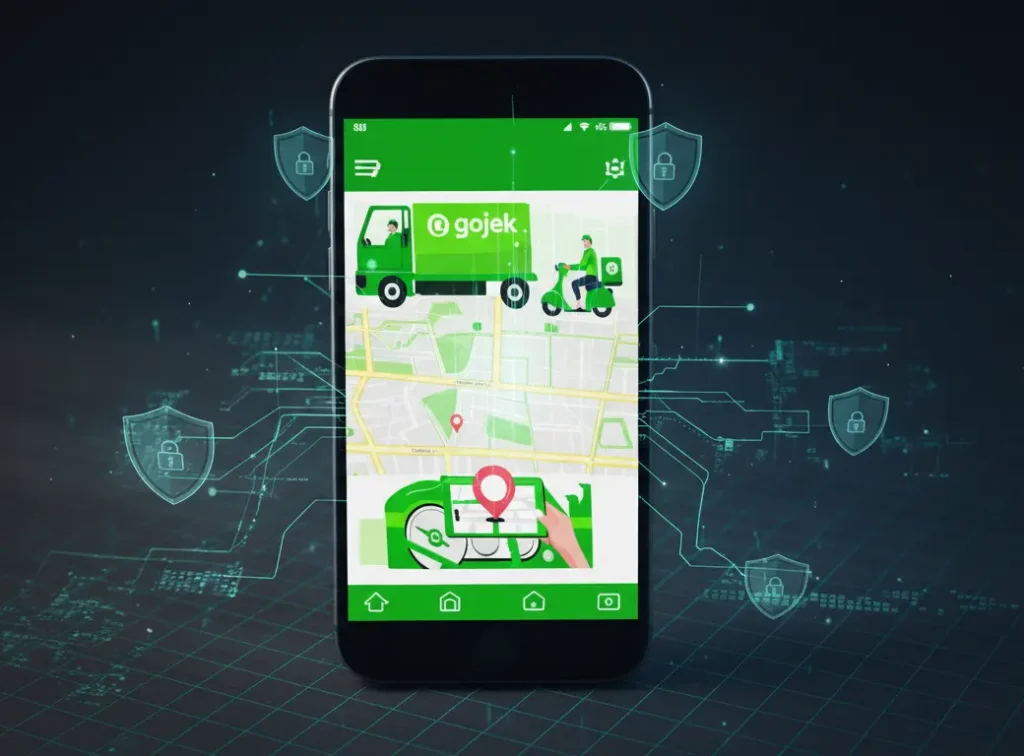You’ve heard the horror stories about data breaches, leaked customer locations, payment theft, and compromised ride-hailing apps. In 2025, passengers and drivers expect absolute security — and businesses launching a white-label Grab app can’t afford to take chances.
With fast launches and pre-built systems, white-label apps have become the preferred route to enter the mobility market. But this also raises an important question: are white-label Grab apps truly safe? And more importantly: what separates a secure solution from a risky one?
Security today is no longer a “feature” — it’s a foundation. A single vulnerability in real-time location tracking, payment systems, or driver verification can trigger legal trouble, financial losses, and permanent damage to your brand.
This guide gives you a completely honest assessment of white-label Grab app security in 2025. You’ll learn the real risks, the standards your app must comply with, and how to choose a provider who delivers enterprise-grade safety by default.
Understanding the White-Label Grab App Security Landscape
A white-label Grab app is essentially a ready-made ride-hailing platform that businesses can brand and customize. While it speeds up launch time, the real question is: how secure is the underlying architecture?
To understand that, we need to separate assumptions from reality.
What white-label security actually means
White-label security refers to the built-in protection mechanisms that come with the pre-developed platform, including:

But not all providers implement these safeguards equally. Some follow enterprise-grade standards, while others cut corners to offer lower pricing.
Read more : – What is GrabMart and How Does It Work?
Why people worry about white-label apps
Users and founders raise concerns because ride-hailing apps handle highly sensitive data:
- Live GPS location
- Ride histories
- Customer identity details
- Driver documents
- Payment information
- Communication logs between riders and drivers
Any weakness can lead to serious breaches — which is why questions around white-label app safety are justified.
Current threat landscape for Grab-type mobility apps
Ride-hailing apps face some of the most aggressive security threats, including:
- GPS spoofing
- Account takeover attacks
- Payment fraud
- API interception
- Driver identity manipulation
- Data scraping and unauthorized data access
- Server-side intrusion attempts
- Social engineering targeting support teams
Ride-sharing platforms are attractive targets because attackers can misuse location data, payment systems, and user identities.
Security standards in 2025
In 2025, secure mobility platforms must adhere to strict global standards such as:
- ISO 27001 information security controls
- SOC 2 Type II for data handling
- GDPR for data protection
- PCI DSS for payment processing
- OWASP Mobile Top 10 for app security
- Zero-trust API authentication
- Multi-layer encryption standards
Any deviation from these leaves your app vulnerable.
Real-world statistics on app security incidents
Based on 2023–2025 global app security reports:
- 62 percent of ride-hailing apps tested showed at least one high-risk vulnerability.
- 41 percent suffered API-related security flaws.
- 28 percent had improper access control, leading to unauthorized data visibility.
- 33 percent of mobility apps failed basic compliance checks for GDPR.
- 52 percent of breaches were linked to outdated or unpatched code.
These numbers show why white-label app buyers must demand transparency, auditing, and certifications.
Read more : – Best Grab Clone Scripts in 2025: Features & Pricing Compared
Key security risks and how to identify them
A white-label Grab app touches live locations, payments, personal data, and driver documentation. That makes it a high-value target. The real danger is not just that risks exist, but that many of them are invisible to non-technical founders unless they know what to look for.
Let’s break the risk areas down into three layers: data, technology, and business.
Data protection and privacy risks
This is where regulators, users, and lawyers all focus first.
User personal information
Your app stores names, phone numbers, profile photos, ID proofs for KYC, and sometimes government-issued documents. Risks include:
- Data stored without encryption at rest
- Over-permissive internal access (too many people can see raw data)
- Lack of data minimization (collecting more than necessary)
- No clear data retention policy
If this data leaks, it can be used for identity theft, stalking, and social engineering.
Payment data security
Even if you use gateways like Stripe, Razorpay, or local PSPs, your white-label app still handles:
- Payment tokens
- Partial card information
- Transaction logs and billing details
- Improper storage of payment-related tokens in logs
- Insecure integration with the payment gateway
- Absence of PCI DSS aligned practices
Location tracking concerns
A Grab-style app continuously tracks:
- Rider pickup and drop locations
- Driver live routes
- Ride history over time
- Location data stored indefinitely without anonymization
- Unprotected access to trip history
- Internal tools that allow staff to query any ride or user without restriction
Location misuse can create serious safety and legal exposure, especially in regions with strict privacy laws.
GDPR/CCPA and similar compliance gaps
If you operate or expand into regions covered by GDPR, CCPA, or similar laws, you must support:
- Right to access, rectify, and delete data
- Clear consent for tracking and processing
- Lawful basis for data processing
- Proper data processing agreements with vendors
A non-compliant white-label app can make you liable even if the provider wrote the code.
Technical vulnerabilities
This is the layer most non-technical founders underestimate, but attackers actively exploit.
Code quality issues
Poor coding practices can lead to:
- Injection attacks
- Insecure data storage in the app
- Hard-coded API keys in the mobile app
- Lack of input validation and sanitization
Low-quality code makes every other security control weaker.
Server security gaps
A secure app on top of an insecure server is still insecure. Key risks:
- Misconfigured cloud infrastructure
- Open ports and unnecessary services
- Weak access control for server admins
- No network segmentation between components
Compromised servers can expose databases, logs, and internal dashboards.
API vulnerabilities
A Grab-type app is API-heavy: bookings, pricing, routing, payments, notifications. Typical weaknesses:
- Missing authentication on certain endpoints
- Broken access control allowing users to see others’ data
- Inadequate rate limiting, enabling brute-force or scraping
- Insecure handling of webhooks and callbacks
Since everything flows through APIs, a single insecure endpoint can cause a major breach.
Third-party integrations
The more integrations you add, the larger your attack surface becomes:
- SMS gateways
- Maps and routing services
- Analytics and marketing tools
- CRM and support platforms
Risks include over-sharing of user data with third parties, unsecured webhooks, and dependencies on tools without strong security guarantees.
Business and operational risks
Even with strong technical controls, business decisions can create risk.
Legal liability
If there is a data breach, regulators and users will primarily hold the platform operator responsible. Without:
- Proper contracts
- Clear data processing responsibilities
- Documented security controls
you can end up bearing full legal responsibility for your provider’s security failures.
Reputation damage
In mobility, trust is everything. Security incidents can:
- Reduce rider and driver sign-ups
- Increase churn
- Trigger negative media and social coverage
Rebuilding trust is far more expensive than investing in security upfront.
Financial losses
You may face:
- Incident response costs
- Regulatory fines
- Compensation for affected users
- Chargebacks and payment disputes
- Forced downtime, leading to revenue loss
Regulatory penalties
Non-compliance with data protection and sector-specific rules (for transport, payments, or labor) can lead to:
- Fines
- Restrictions on operations
- Orders to suspend data processing
Risk assessment checklist for a white-label Grab app
Use this as a quick lens when evaluating your current or potential provider:
- Is all sensitive data (user, driver, trip, payment metadata) encrypted at rest and in transit?
- Is there documented compliance with standards like ISO 27001, SOC 2, and PCI DSS-aligned practices?
- Are regular third-party security audits and penetration tests performed and shared?
- Does the system implement strong authentication (including multi-factor options for admins)?
- Are APIs protected with authentication, authorization, and rate limiting?
- Is there clear role-based access control for internal teams and admin panels?
- Are logs stored securely without exposing passwords, tokens, or full card details?
- Can you easily support GDPR/CCPA-style user rights (export, delete, restrict processing)?
- Are third-party integrations reviewed and documented from a security standpoint?
- Is there a formal incident response plan and breach notification process?
A security-first partner like Miracuves designs the white-label Grab app architecture around these questions from day one, not as an afterthought.
Security standards your white-label Grab app must meet
A white-label Grab app handles real-time location tracking, rider and driver identity data, payment information, and operational workflows. Because of this, it must follow strict global security and compliance frameworks. These aren’t optional anymore — they’re baseline requirements in 2025.
Essential certifications
ISO 27001 compliance
This standard ensures your app provider follows a globally recognized information security management system. It covers policies, risk management, access control, data protection, and continuous monitoring.
SOC 2 Type II
This certification proves that the provider maintains secure handling of customer data across five trust principles: security, availability, processing integrity, confidentiality, and privacy.
GDPR compliance
Required if you serve customers in regions influenced by EU privacy laws. The app must support consent handling, data deletion, data export, and restrictions on processing.
HIPAA (only if your app handles medical transport or health-related data)
Not directly required for mobility apps unless you integrate healthcare trips or emergency transport features.
PCI DSS for payments
Your app must align with PCI DSS guidelines to ensure safe handling of card details and payment tokens during transactions.
Technical requirements
These are the minimum technical security controls expected from any safe white-label Grab app in 2025.
End-to-end encryption
Encrypts all communication between the app, server, and database to prevent data interception.
Secure authentication (2FA, OAuth, strong password enforcement)
Ensures only legitimate users, drivers, and admin staff can access critical functions.
Regular security audits
Third-party audits identify vulnerabilities before attackers find them. Audit reports should be available to you.
Penetration testing
Simulated attacks to verify the platform can withstand real-world exploitation attempts.
SSL certificates
Mandatory for all API endpoints, admin dashboards, and user interfaces to prevent man-in-the-middle attacks.
Secure API design
APIs must follow zero-trust principles, strict rate limiting, and proper access control.
Security standards comparison table
| Security Requirement | Mandatory for Ride-Hailing Apps | Why It Matters |
|---|---|---|
| ISO 27001 | Yes | Ensures a complete, audited security framework |
| SOC 2 Type II | Yes | Confirms data handling processes are secure and monitored |
| GDPR | Yes (region-based) | Protects user privacy and prevents regulatory fines |
| PCI DSS | Yes | Secures payment data and reduces fraud risk |
| End-to-end encryption | Yes | Protects sensitive user and location data |
| Secure API architecture | Yes | Prevents unauthorized access and data leaks |
| Penetration testing | Yes | Identifies hidden vulnerabilities before launch |
| HIPAA | Conditional | Only if handling medical transport or patient data |
These standards collectively ensure that your white-label Grab app is secure, compliant, and trustworthy from day one.
Red flags – how to spot unsafe white-label providers
Not all white-label Grab app providers follow strong engineering or security practices. Some prioritize low pricing and quick delivery over long-term safety. Before choosing any provider, you must evaluate their security maturity.
No security documentation
A secure provider always shares security policies, architecture details, and compliance documents. If they cannot provide them, it’s a clear risk.
Cheap pricing without explanation
Extremely low prices usually indicate shortcuts in code quality, infrastructure, encryption, or compliance efforts.
No compliance certifications
If a provider cannot demonstrate ISO 27001, SOC 2, or GDPR readiness, their processes are not built for safe data handling.
Outdated technology stack
Legacy code, old frameworks, or unsupported libraries increase vulnerability risks and future maintenance problems.
Poor code quality
Common signs include tightly coupled modules, lack of documentation, missing unit tests, and visible hard-coded keys in builds.
No security updates policy
A mobility platform needs constant updates to patch vulnerabilities. If the provider does not commit to scheduled updates, your app becomes unsafe over time.
Lack of data backup systems
Without structured backups, a server crash or breach can permanently delete operational and user data.
No insurance coverage
If the company doesn’t carry liability or professional indemnity insurance, you bear all risk for their mistakes.
Evaluation checklist
Use this checklist before selecting any white-label Grab app provider:
- Do they provide detailed security documentation and technical architecture?
- Can they show compliance readiness for ISO 27001, SOC 2 Type II, GDPR, PCI practices?
- Do they offer a written update and patching schedule?
- Is the technology stack modern, supported, and scalable?
- Do they conduct third-party penetration testing?
- Can they provide sample audit reports or summaries?
- Do they have role-based access control for the admin systems?
- Are logs sanitized and securely stored?
- Do they provide data backup frequency details and retention policies?
- Do they have liability or professional indemnity coverage?
- Are service-level agreements (SLAs) clearly defined?
- Can you test or review the code before deployment?
A trusted partner like Miracuves provides all these details upfront because transparency is the foundation of secure development.
Best practices for secure white-label Grab app implementation
A secure white-label Grab app is not just about choosing the right provider — it’s about implementing the solution correctly before launch and maintaining strong security throughout its lifecycle. Even a well-built system becomes vulnerable if deployment, monitoring, or operational practices are weak.
Here are the essential best practices every operator must follow.
Pre-launch security
Security audit process
Before going live, your app should undergo a complete security audit covering code, APIs, databases, authentication systems, and admin panels. This verifies that no overlooked vulnerabilities make it into production.
Code review requirements
A thorough manual and automated code review helps identify insecure coding patterns, hard-coded keys, unsafe dependencies, and logic flaws early.
Infrastructure hardening
Your cloud or dedicated server environment must be locked down to prevent external threats. Hardening includes:
- Disabling unused ports
- Enforcing strong firewall rules
- Applying network segmentation
- Using secure storage for secrets
- Enforcing admin access restrictions
Compliance verification
All compliance requirements (GDPR, PCI alignment, regional data rules) must be validated before launch. This ensures your platform is legally ready, not just technically ready.
Staff training programs
Security weak points often come from the human side. Your team needs basic training on:
- Access control usage
- Handling sensitive data
- Recognizing phishing or impersonation attempts
- Incident escalation procedures
A trained team reduces operational security risks significantly.
Post-launch monitoring
Continuous security monitoring
Your platform needs live monitoring to detect unusual APIs calls, suspicious login patterns, abnormal location behavior, or unauthorized access attempts.
Regular updates and patches
Security patches must be applied regularly, especially for mobile OS updates, dependencies, and server components.
Incident response planning
You must have a documented plan that defines:
- How incidents are detected
- What actions are taken
- Who responds
- How affected users are notified
- How recovery happens
A proper plan reduces the impact of a breach.
User data management
Sensitive user and driver data must be stored securely, deleted on schedule, and accessed only by authorized personnel following role-based permissions.
Backup and recovery systems
Automated backups should run on a consistent schedule with encrypted storage. The recovery process must be tested to ensure the app can be restored quickly after failures.
Security implementation timeline
Phase 1 – Pre-deployment (1–2 weeks)
- Full code review
- Security audit
- Server and cloud hardening
- Compliance checks
- Staff security orientation
Phase 2 – Launch readiness (1 week)
- Patch fixes from audits
- Functional and security testing
- Integration testing
- Admin access setup
- Backup systems validation
Phase 3 – Post-launch (continuous)
- 24/7 monitoring
- Performance and threat analytics
- Monthly security updates
- Quarterly penetration tests
- Regulatory compliance updates
Following a structured implementation timeline ensures that your white-label Grab app is secure at launch and remains secure as the platform scales.
Legal and compliance considerations
Launching a white-label Grab app is not only a technical responsibility — it is a legal one. Mobility platforms handle sensitive personal data, financial information, behavioral patterns, and real-time locations. Regulators across the world treat these categories as high-risk, meaning your app must follow strict legal frameworks from day one.
This section outlines the key compliance requirements and legal obligations you need to understand before operating your platform.
Regulatory requirements
Data protection laws by region
Depending on where your app operates, you must comply with region-specific privacy regulations such as:
- GDPR (European regions)
- CCPA / CPRA (California and similar US standards)
- PDPA (Singapore, Malaysia)
- NDPR (Nigeria)
- DIFC / ADGM data laws (Middle East)
- India’s Digital Personal Data Protection Act (DPDPA 2023)
Each law demands explicit consent, secure data handling, and transparency.
Industry-specific regulations
Ride-hailing platforms often fall under:
- Transport authority rules
- Local taxi licensing guidelines
- Driver verification mandates
- Emergency safety standards
These impact how you verify drivers, store documents, and manage user safety.
User consent management
Your app must provide:
- Clear consent prompts
- Tracking disclosures
- Purpose-specific permissions
- Easy options for revoking consent
Improper consent management is one of the fastest ways to incur penalties.
Privacy policy requirements
A compliant privacy policy must explain:
- What data is collected
- Why it is collected
- How it is stored
- How long it is retained
- Who it is shared with
- User rights and deletion procedures
It should match actual practices, not generic templates.
Terms of service essentials
Your ToS must cover:
- Liability limitations
- Payment responsibilities
- Driver and rider obligations
- Dispute resolution
- Safety expectations
- Account termination conditions
This protects your business from legal disputes.
Liability protection
Insurance requirements
A secure platform should be backed by:
- Cyber liability insurance
- Professional indemnity insurance
- Data breach insurance
- Server downtime coverage
This protects you financially if unforeseen incidents occur.
Legal disclaimers
Proper disclaimers limit your liability for:
- Driver misconduct
- User misuse
- Third-party integration behavior
- External factors like network outages
User agreements
Agreements must define:
- Rights and obligations
- Safety protocols
- Identity verification rules
- Payment terms
Ensuring these agreements are legally strong reduces operational risk.
Incident reporting protocols
If a data breach occurs, regulations often require:
- Notification to affected users
- Reporting to authorities
- Documentation of the incident
- Description of corrective measures
Many regions expect this within 72 hours.
Regulatory compliance monitoring
Laws change quickly. Your app must undergo continuous compliance review to ensure all processes remain aligned with updated requirements.
Compliance checklist by region
| Region | Mandatory Regulations | Key Requirements |
|---|---|---|
| Europe | GDPR | Consent, data export, deletion rights, breach reporting |
| USA | CCPA/CPRA (varies by state) | Opt-out rights, data transparency, do-not-sell, protections for minors |
| Middle East | DIFC/ADGM | Data localization, consent, secure processing |
| India | DPDPA 2023 | Notice-and-consent model, children’s data, grievance officer |
| Singapore | PDPA | Notification obligations, access requests, purpose limitation |
| Africa | NDPR | Consent, data minimization, local representation requirements |
These legal and compliance obligations ensure that your app operates responsibly, avoids penalties, and maintains user trust.
Why Miracuves white-label Grab app is your safest choice
Security is not a single feature — it is an ecosystem of processes, technologies, and compliance standards working together. Most providers focus on launching fast. Miracuves focuses on launching secure.
A white-label Grab app built by Miracuves is engineered from the ground up to meet enterprise-level safety, performance, and compliance requirements.
Here’s what makes Miracuves the most trusted security-first mobility platform provider.
Miracuves security advantages
Enterprise-grade security architecture
The entire platform is built on secure coding principles, layered encryption, and a hardened backend infrastructure that prevents unauthorized access.
Regular security audits and certifications
Miracuves performs recurring internal and third-party security audits to ensure the app remains compliant with the latest standards and threat models.
GDPR and CCPA compliant by default
User consent flows, data access rights, deletion workflows, and retention policies are all engineered to meet modern privacy regulations.
24/7 security monitoring
Real-time monitoring helps detect anomalies such as unauthorized admin access, suspicious API requests, or unusual ride behavior patterns.
Encrypted data transmission
All communication between app, server, payment gateway, and user devices is encrypted using secure protocols.
Secure payment processing
Aligned with PCI DSS standards, ensuring card data, tokens, and payment logs stay protected.
Regular security updates
Miracuves maintains an ongoing update cycle to patch vulnerabilities, strengthen authentication, and improve infrastructure security.
Insurance coverage included
Miracuves solutions come with professional indemnity and cyber liability support, giving businesses added peace of mind.
Conclusion
Don’t compromise on security. Miracuves white-label Grab app solutions include enterprise-grade protection from day one.
With over 600 successful deployments and zero major security breaches, Miracuves is the trusted partner for building safe, compliant ride-hailing platforms.
Launching a white-label Grab app in 2025 demands more than speed — it demands strong, verifiable security. When your platform handles real-time location data, payments, and personal identities, safety becomes the foundation of trust. Choosing a provider with proven security practices ensures your business stays compliant, protected, and ready to scale without risk.
Get a free security assessment and discover why leading businesses choose Miracuves for secure mobility solutions.
FAQs
1. How secure is a white-label app compared to custom development?
A well-built white-label app with ISO 27001 and SOC 2 standards can be as secure or more secure than many custom-built apps.
2. What happens if there’s a security breach?
You must contain the issue, notify affected users, report to regulators if required, and apply fixes immediately.
3. Who is responsible for security updates?
Your provider manages platform-level updates while you handle operational practices.
4. How is user data protected in a white-label Grab app?
Through encryption, secure authentication, controlled access, and compliance frameworks.
5. What compliance certifications are important?
ISO 27001, SOC 2 Type II, GDPR alignment, and PCI DSS–aligned payment handling.
6. Can white-label apps meet enterprise security standards?
Yes, when built with secure coding practices, audits, encryption, and role-based access.
7. How often should security audits be done?
Quarterly penetration testing and annual full security audits.
8. What does Miracuves include in its security package?
Encryption, audits, secure APIs, monitoring, compliance tooling, and regular updates.
9. How to handle global compliance differences?
Follow region-specific laws like GDPR, CCPA, PDPA, NDPR, and India’s DPDPA.
10. What insurance should an operator have?
Cyber liability, professional indemnity, and data breach insurance.
Related Articles:








